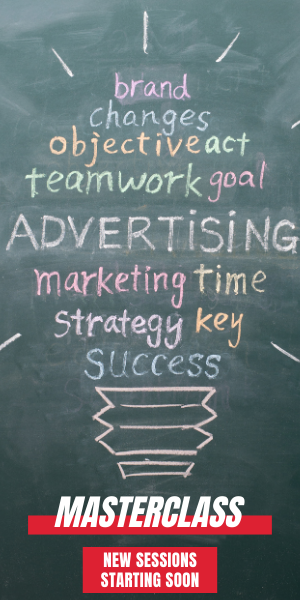Today we continue our discussion of the importance of casino marketing training.
The casino marketing landscape continues to shift and change at a rapid pace. Everything from global political shifts to that pesky pandemic influences daily business and how we plan for the future. Along with the changes comes an ever-increasing need to polish or improve our skills.
You can’t look through your emails for 10 minutes and not see some article telling you that you need to be the best at data-driven marketing, strategy, and cross-team management. We simultaneously need to be able to test, analyze, differentiate between a plethora of metrics and the most important KPIs, ultimately gaining the insights that will improve our business.
Then, added to the list, there are the ooey-gooey soft skills we all need to have.
- communication
- emotional intelligence
- problem-solving
- adaptability
- people management
- creativity
It makes for a long laundry list of training topics to try to stay on top of all of this all the time. As our customer base changes, our skill sets must keep up, and marketing training is how to do that.
Impact of the “always-on” customer
Casino customer bases are starting to shift because of the aging of our core customers, the increasing adoption of Gen Xers, and the necessity to keep adding new customers. We are not alone as we cope with these shifts, but we do need to pay specific attention to how the changes impact our industry.
We are fortunate to practice marketing at a time when technology is advancing our efforts. Still, we have to remember the power we hold to inspire customers. We need to foster meaningful relationships with them. Our ability to engage them will continue to have a considerable impact on our ongoing success. We need to empower brand ambassadors to take us into the future.
So, now you must balance the human side of marketing with the data side that all the articles tell you are an absolute requirement. So, now you have even more skills you need to hone like:
- omnichannel marketing
- AI and machine learning
- digital – SEO, social, email, and mobile
- evolving media and programmatic buying
This balance is becoming decisively more challenging to develop and maintain. Our customers are no longer willing to absorb static billboards and TV advertising and then buy in a linear correlation to the marketing budget’s size. The notion that the more you spend on ads, the more they buy, just doesn’t work anymore. Instead, now they are “always-on” and reachable through a variety of devices and social media. So, how do we play this new game? We need to raise customer awareness and interest with engaging stories, offering participation and intense dialogs on all of our chosen media channels, whether digital or classic.
 Long-term strategies and business models
Long-term strategies and business models
This “always-on,” agile business world also needs new marketing strategies and different approaches for the development of these strategies. For example, there’s no longer any point in holding a strategy session in isolation. Rolling out a strategy to employees and customers who never had any input seems rather old-fashioned now. And you’re bound to get some pushback instead of engagement in the new plan.
Has long-term planning gone the way of the dinosaurs now that we have to cope with the fast pace of technology, customer preferences, and market changes? Not quite.
What seems clear is that business models and marketing strategies, digital or not, require significantly agile elements to allow for quick pivots in the face of market shifts. How agile depends on your company, working toward a perfect blend of approaches, planning, and execution cycles.
On top of all that, we still have to get the mail out and the offers right because that remains what our current customers want (and expect.)
Training and development are vital
There is no denying that training and development are necessary. We all know that learning is essential. But expanding your knowledge base and that of your employees is also vital to your organization’s health. Although it’s one of those line items that we always put on our list of to-do’s, it never seems to make it to the top. That list seems to grow like the weeds in my garden, evidence that something is happening, but not always what I planned. However, there is hope. You CAN add learning to your list and get it done.
I know the valid reasons why training doesn’t always rise to the top of the list. It can be expensive. Employees who are attending training are not working. Alternatively, even worse, no one is asking for formalized training outside of that needed for new technology or programs we’ve already invested in.
Employees are our biggest asset, and investing in that talent is vital to building sustainable growth and ongoing success.
Employees are our biggest asset, and investing in that talent is vital to building sustainable growth and ongoing success. You go through a lengthy process to recruit and hire qualified staff. Still, sometimes the emphasis on employee relationships stops there. Dedicated training fosters employee engagement, critical to your company’s financial future.
Ensuring that employees make time for training is the top ongoing challenge in talent development. As an employer, you need to reduce the resistance to taking time to learn. The first step to reducing resistance is engaging your talent with the existing platforms they already spend their time on. Training delivered on multiple platforms, with mobile and on-demand dynamic accessibility, personalized, and offering ongoing support is the key to reducing the “I don’t have time” objection.
The benefits vs the roadblocks
I’m here to tell you the benefits will outweigh those roadblocks. Proper training can address the weaknesses in your department. Employees who take advantage of training opportunities are better prepared for the future of your organization. They are confident and competent, and that confidence can help them stay on top of industry changes that can help you maintain (or improve) your position in the market. Employees feel challenged and appreciated when training opportunities are afforded to them. Productivity and quality of work improve, and turnover is reduced.
Creating learning opportunities
With a world of information at their fingertips, there are many ways to learn. You can Google “how do I” and get answers. Still, purposeful learning environments are designed to immerse you in topics and build your skills. As a lifelong learner, I have experienced a few of these environments.
Virtual classrooms allow participants to view presentations as well as communicate with fellow participants and the trainer or teacher. These classrooms allow participation from around the world. This style of learning can be extremely budget-friendly as travel is limited to the nearest computer. All you need is an internet connection. Classes typically happen on a regular schedule, much like in-person classes with lessons and homework due according to set deadlines.
Self-paced learning is typically pre-recorded to allow the participant to work sessions into their work and home schedules and is ideally suited for a lifelong learner. These types of training are very scalable, providing you with the flexibility to train as many people as you want. Although there is a front-loaded investment in designing the training, you can continue gaining a return for that investment over time. This type of learning is perfect for training topics that will be used repeatedly. New employees can learn new skills, and existing employees can polish those that may have dulled over time. Of course, the drawback is that you are dependent on the employee’s motivation to learn.
Masterclass can be defined in numerous ways. Google lists a variety of definitions for the term, but the generally accepted explanation is that these types of classes are “one-off” and taught by an expert in the subject matter. Because the level of information is specific and well beyond the surface, it is best experienced by students with a genuine interest, ideally already understanding some basics before they begin. These classes are typically divided up into easy-to-consume modules with associated materials and, more than likely, several assignments to help you develop your new skill set. These classes can be in-person or online and are designed for trainees to experience a feeling of one-to-one learning. I have been part of masterclasses that have also included video group discussions and resourcing.
Workshops are designed to be interactive. Typically focused on a single topic over a short period, hands-on work is a signature part of this type of training. Smaller groups allow trainers to deliver content through practical exercises and close interactions. Active participation allows for the exchange of ideas and best practices. Participants are often given assignments, materials, or devices to implement learning, so knowledge and execution are equally emphasized. Casino Marketing Boot Camp was explicitly designed with this level of learning in mind. Also, the Boot Camp adds the elements of pre-course work to assist attendees to hit the ground running both at the event and once they return to their daily responsibilities.
Topic-programmed conferences and seminars can give you intensive exposure to a specific topic or field. Discussions and presentations are provided by multiple experts, thereby giving you a breadth of information. It’s a great way to gain knowledge for those not interested in reading the latest business books. The discussion offers the opportunity for debate, encouragement, and answers. Also, because these events typically combine learning with socializing, they are an excellent way to gain access to experts and network with other marketers.
Books and podcasts are some of the best ways to learn new things at a personal pace. Whether it’s a marketing or a juicy installment of the latest true crime investigation, I love a good podcast. Truth be told, reading was never “my thing,” but I make reading fiction, non-fiction, and business books part of every day. With summer just around the corner, this is the perfect time to create a reading list for yourself. I guarantee you will reach Labor Day with a new (or improved) skill or two.
Additionally, many new business books come with added resources and tools to help you take the concept into action. Check out our marketing book club to see some of the books on my shelf. The lessons in a business book are obvious, but did you realize that reading fiction can help you build empathy and enhance your ability to see other points of view? According to neuroscience, reading fiction can also improve your brain function. So, that juicy novel has a dual purpose!
The mutual benefit to all of these types of learning is a renewed energy and motivation. Too often, the daily grind can overshadow the excitement we often had when we started our jobs. Pursuing opportunities to learn and engage with like-minded professionals can lead to increased job satisfaction and productivity.
Remote Learning Opportunities
If COVID has taught us nothing else, it has undoubtedly helped us discover just how much people can get done remotely. Through flexible delivery and innovative technologies, remote learning has recently (finally) gained well-deserved prominence in the world’s educational landscape.
Arguably the best selling point for remote learning is the vast flexibility, and additional control learners have over their training schedules. Plus, because most, if not all, of the learning resources are online, remote learners can access training where (and when) they wish.
In stark contrast to traditional training sessions where participants stick with rigid schedules, remote learning gives employees more freedom. They are free to engage with, analyze, and digest information in ways that work for them, on their own schedule. This freedom allows employees to carry on with their other work commitments while attaining the training they need.
The more flexible delivery of these remote training sessions also aids employees living farther from the training provider. The easy, online accessibility eliminates learner travel hours and commute expenses. All they need is a computer, tablet, or smartphone and a stable internet connection to set up.
Video conferencing software like Skype, Microsoft Teams, and Zoom also offer some safe, face-to-face interactions as needed between trainers and colleagues. In fact, studies find that learners using “online learning conditions” performed better than those in conventional, face-to-face classroom-style instruction. These results are probably because of how remote learning is a more personalized and independent activity, so employees can study using methods that suit them best, thus leading to better overall results.
The bottom line – Remote learning works, too
The bottom line is that employees using remote learning are more likely to stick with the training courses, and some studies show retention rates increase by 25 to even 60%!
Any of these options can be tailored to be delivered onsite or off. The benefits of onsite learning are apparent and make decisions relatively easy (though resources can be a challenge.)
- Save valuable time and money otherwise lost or used in travel
- Flexibility to make last-minute changes to content and attendees
- Opportunity to tailor the content to the specific market or attendee needs
The benefits of offsite learning have made me a fan of these opportunities when they are available.
- Sitting in the same office day in and day out can stifle your creativity if you don’t make a concerted effort to continually re-energize. Getting out of the routine can do that.
- Offsite learning environments often force you to step out of your comfort zone.
- Because you’re not next to your phone or computer, you can focus on learning.
- There’s nothing quite like the energy when you’re in a room with like-minded people, all learning new things. Absorb that energy and take it back to your property to share.
- Expanding your network with new contacts can provide you with the idea and sounding boards you never knew you needed.
- Sitting and learning in a different environment can challenge you.
Start learning something new
If you have a budget, find the most suitable option for your learning style and your schedule. Do your homework. It’s one thing to be bursting with enthusiasm when you ask your boss to invest in you and your chosen learning. Still, you should also prepare yourself to answer a few questions to justify not only the expense but, the specific program:
- How will this immediately impact your role or projects?
- What are the long-term benefits?
- How will this be shared with co-workers?
If you find out if your department does not have a budget, check with human resources to see if there is a budget you can tap into. If a budget is not currently available, start planning your pitch for next year using the same research you would do if you did.
This originally appeared as an episode of Drivetime Marketing and has been updated. You can listen to the original broadcast below.



Recent Comments